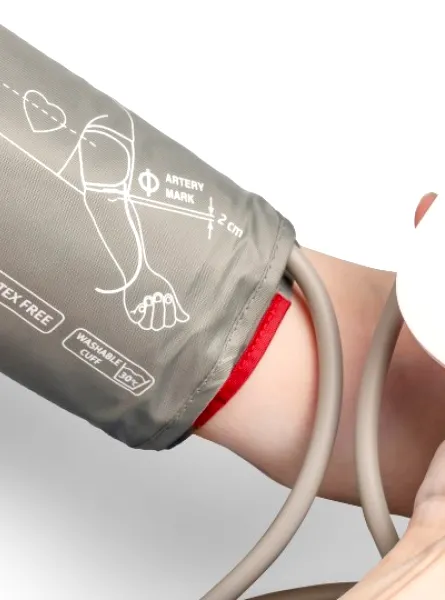
Chronic pain affects 8 million Canadians, and the direct costs are estimated to be between $38.3 and $40.4 billion Canadian (1). Its astronomical cost and major impact on quality of life have led several researchers to evaluate diet as a therapeutic option, given its accessibility and low cost. A meta-analysis also confirms that diet plays a role in the management of chronic pain (2).
Pathophysiology and Definition of Chronic Pain
Chronic pain can generally be defined as pain lasting more than 3 months (3). Its 7 major categories include primary pain (including fibromyalgia and low back pain), cancer-related pain, post-surgical and post-traumatic pain, neuropathic pain, migraine and orofacial pain, visceral pain and musculoskeletal pain (4). Visceral pain will not be discussed in this article, as the nutritional treatment of this type of pathology (especially irritable bowel syndrome) has already been partially discussed in a previous article.
The physiopathology of pain is complex. It results from the activation of peripheral receptors and specific nerve fibers. Chronic pain can be caused by the continuous activation of these fibers by a prolonged tissue lesion. These lesions release several substances, including those involved in the inflammatory cascade (5). This inflammatory state includes the migration of immune cells into the injured tissue, the release of pro-inflammatory cytokines and reactive oxygen species (6). This state can become chronic and is associated with chronic pain (7).
Nutrients Associated with Chronic Pain
Omega-3
Omega-3 and omega-6 fatty acids compete in the production of prostaglandins and thromboxanes, chemical mediators involved in the inflammatory cascade (8). A higher intake of omega-3 leads to decreased production of pro-inflammatory metabolites and increased production of anti-inflammatory ones (8).
Thus, omega-6 is classically associated with a pro-inflammatory component, whereas omega-3 is more associated with an anti-inflammatory state (8). In a randomized controlled trial of 56 participants, increased omega-3 intake coupled with decreased omega-6 intake for 12 weeks reduced the negative impacts related to migraine pain (measured by the HIT-6 questionnaire) and the number of hours of migraines per day, compared to a low omega-6 diet alone (9). Similar results were observed in a randomized controlled trial of 51 participants supplemented for 8 weeks with 400 mg eicosapentaenoic acid (EPA) and 350 mg docosahexaenoic acid (DHA) compared with a placebo group (10). According to a meta-analysis published in 2017, a marine-derived oil supplement (accounting for 130 mg to 4050 mg of EPA and 10 mg to 2700 mg of DHA per day) has a modest but positive impact on arthritis pain (11). A modest improvement in pain is also observed when omega-3 (1530 mg of EPA and 1040 mg of DHA per day for 8 weeks) is administered for the treatment of rotator-cuff-related shoulder pain (12).
In summary, omega-3s appear to have a positive impact on the signs and symptoms of several pathologies that cause chronic pain.
Polyphenols and Flavonoids
Polyphenols are known to act as anti-inflammatory substances and modulate inflammation (13). Supplementation of polyphenols (specifically caffeic and paracoumaric acid) has an anti-inflammatory effect and induces an analgesic effect in mice (13). In humans, adding 50g of freeze-dried strawberries daily (which include several polyphenols, such as catechin, epicatechin, quercetin, etc.) improves knee pain caused by osteoarthritis and decreases the production of pro-inflammatory cytokines (IL-6, IL-1b and MMP-3) (14). Similarly, adding 40g of dried blueberry powder per day in 63 adults for 4 months resulted in a significant improvement in the WOMAC score, which was not observed in the placebo group (15). However, no difference in inflammatory markers was observed (15). Literature reviews have been carried out on the impact of polyphenol consumption on diabetic neuropathy (16) and rheumatoid arthritis (17), demonstrating the promising avenue of polyphenols in the treatment of these pathologies.
Some studies also show that curcumin, the polyphenolic pigment in turmeric, also has antinociceptive and anti-inflammatory effects (18). A meta-analysis demonstrates that an extract of approximately 1000 mg of curcumin in patients suffering from arthritis allows a significant decrease in the WOMAC score and the visual analog scale (VAS) (19). Moreover, no significant difference was detected with traditional pharmacological treatment for pain (19). However, these results should be interpreted with caution, given the small sample sizes, methodological quality, and limited number of studies (19).
Polyphenols and flavonoids therefore appear to be important dietary components in managing chronic pain for many conditions.
The Glycemic Index
Foods with a high glycemic index lead to an increase in oxidative stress via NF-kB, a protein important in activating the inflammatory process (20). Two randomized controlled trials report a decrease in CRP with a low glycemic index diet compared to a high glycemic index diet (21) or a low carbohydrate and low fat diet (22).
Although additional studies are clearly needed, the glycemic index appears to be a promising avenue for managing inflammation and associated pain.
Key Food: Ginger
Several in vitro and in vivo studies have described the anti-inflammatory, antioxidant, and analgesic properties of gingerol, the active molecule in ginger (23). A systematic review concludes that ginger can reduce pain in several pathologies, including osteoarthritis (24). However, additional studies are needed before ginger can be formally recommended for treating pain given the limited number and quality of studies (24). More recently, a study reported that an extract of ginger, turmeric, and black pepper similarly decreased circulating levels of the pro-inflammatory prostaglandin PGE2 as naproxen in patients with osteoarthritis (25).
Limitations
Many limitations must be reported on these results. Although a few randomized controlled studies are available, many of these results are derived from in vitro or rodent studies. In human studies, sample size and study quality (e.g., lack of a control group) limits the interpretation of results. In addition, the inclusion of diverse potential chronic pain-causing conditions in these studies can complicate the results, as some conditions may require their own treatments (e.g., irritable bowel syndrome). Finally, the very notion of pain, as an individual, physical, emotional, and psychological experience, makes it difficult to measure this variable objectively.
Despite these limitations, nutrition seems to be a very promising avenue for treating chronic pain. A TeamNutrition nutritionist can explain the different nutritional treatment options to your clients and adapt these recommendations to their diet and lifestyle. Contact us to learn more about our services.
References
-
Gouvernement du Canada. (2021). Douleurs Chroniques. Available at https://www.canada.ca/fr/sante-publique/services/maladies/douleur-chronique.html. Accessed June 27, 2022.
-
Brain, K., Burrows, T.L., Rollo, M.E., et al. (2019). A systematic review and meta-analysis of nutrition interventions for chronic noncancer pain. J Hum Nutr Diet; 32(2):198–225.
-
IASP. (2019) Definitions of Chronic Pain Syndromes. Available at https://www.iasp-pain.org/advocacy/definitions-of-chronic-pain-syndromes/. Accessed June 27, 2022.
-
Treede, R-D., Rief, W., Barke, A. et al. (2019). Chronic pain as a symptom or a disease: the IASP Classification of Chronic Pain for the International Classification of Diseases (ICD-11). Pain; 160(1):19–27.
-
Le manuel MSD. (2022). Revue générale de la douleur. Available at https://www.msdmanuals.com/fr/professional/troubles-neurologiques/douleur/revue-g%C3%A9n%C3%A9rale-de-la-douleur. Accessed July 7, 2022.
-
Mittal, M., Siddiqui, M.R., Tran, K., Reddy, S.P. et Malik, A.B. (2014). Reactive oxygen species in inflammation and tissue injury. Antioxid Redox Signal; 20(7):1126–67.
-
Sam Zhou, W.B., Meng, J., et Zhang, J. (2021). Does Low Grade Systemic Inflammation Have a Role in Chronic Pain? Front Mol Neurosci; 14:785214.
-
Simopoulos, A. (2002). Omega-3 fatty acids in inflammation and autoimmune diseases. J Am Coll Nutr; 21(6):495–505.
-
Ramsden, C.E.; Faurot, K.R.; Zamora, D.; et al. (2013). Targeted alteration of dietary n-3 and n-6 fatty acids for the treatment of chronic headaches: A randomized trial. Pain; 154(11):2441–51.
-
Soares, A.A.; Loucana, P.M.C.; Nasi, E.P.; Sousa, K.M.H.; Sa, O.M.S. et Silva-Neto, R.P. (2018) A double-blind, randomized, and placebo-controlled clinical trial with omega-3 polyunsaturated fatty acids (OPFA-3) for the prevention of migraine in chronic migraine patients using amitriptyline. Nutr. Neurosci; 21(3), 219–23.
-
Senftleber, N.K., Nielsen, S.M., Andersen, J.R. et al. (2017) Marine oil supplements for arthritis pain: a systematic review and meta-analysis of randomized trials. Nutrients; 9(1):42.
-
Sandford, F.M., Sanders, T.A., Wilson, H. et Lewis, J.S. (2018) A randomised controlled trial of long-chain omega-3 polyunsaturated fatty acids in the management of rotator-cuff-related shoulder pain. BMJ Open Sport Exerc Med; 4(1): e000414.
-
Bjoklund, G., Aaseth, J., Dosa M.D., Pivina, L., Dadar, M., Pen, J.J. et Chirumbolo, S. (2019). Does diet play a role in reducing nociception related to inflammation and chronic pain? Nutrition; 66:153–65.
-
Schell, J., Scofield, R.H.., Barret, J.R. et al. (2017). Strawberries Improve Pain and Inflammation in Obese Adults with Radiographic Evidence of Knee Osteoarthritis. Nutrients; 9(9):949.
-
Du, C., Smith, A., Avalos, M. et al. (2019). Blueberries Improve Pain, Gait Performance, and Inflammation in Individuals with Symptomatic Knee Osteoarthritis. Nutrients; 11(2):290.
-
Naseri, R., Farzaei, F., Fakhri, S. et al. (2019). Polyphenols for diabetes associated neuropathy: Pharmacological targets and clinical perspective. Daru; 27(2):781–98.
-
Rosillo, M.A,; Alarcón-de-la-Lastra, C. et Sánchez-Hidalgo, M. (2016). An update on dietary phenolic compounds in the prevention and management of rheumatoid arthritis. Food Funct; 7(7): 2943–69.
-
Hewlings, S.J. et Kalman D.S. (2017). Curcumin: A Review of Its Effects on Human Health. Foods; 6(10):92.
-
Daily, J.W., Yang, M. et Park, S. (2016). Efficacy of Turmeric Extracts and Curcumin for Alleviating the Symptoms of Joint Arthritis: A Systematic Review and Meta-Analysis of Randomized Clinical Trials. J Med Food; 19(8):717–29.
-
Dickinson, S., Hancock, D.P., Petocz, P., Ceriello, A. et Brand-Miller, J.(2008). High-glycaemic index carbohydrate increases nuclear factor-κB activation in mononuclear cells of young, lean healthy subjects. Am J Clin Nutr; 87(5):1188–93.
-
Gögebakan, O., Kohl, A., Osterhoff, MA. et al. (2011). Effects of weight loss and long-term weight maintenance with diets varying in protein and glycaemic index on cardiovascular risk factors: the Diet, Obesity, and Genes (DiOGenes) study: a randomized, controlled trial. Circulation; 124(25):2829–38.
-
Ebbeling, C.B., Swain, J.F., Feldman, H.A., Wong, W.W., Hachey, D.L., Gracia-Lago, E. et Ludwig D.S. (2012). Effects of dietary composition on energy expenditure during weight-loss maintenance.JAMA; 307(24):2627–34.
-
Semwal, R.B., Semwal, D.K., Combrinck, S. et Viljoen, A.M. (2015). Gingerols and shogaols: Important nutraceutical principles from ginger. Phytochemistry; 117:554–68.
-
Terry, R., Posadzki, P., Watson, L.K. et Ernst, E. The use of ginger (Zingiber officinale) for the treatment of pain: a systematic review of clinical trials. Pain Med; 12(12):1808–18.
-
Heidari-Beni, M., Moravejolahkami, A.R., Gorgian, P., Askari, G., Tarrahi, M.J., et Bahreini-Esfahani, N. (2020). Herbal formulation "turmeric extract, black pepper, and ginger" versus Naproxen for chronic knee osteoarthritis: A randomized, double-blind, controlled clinical trial. Phytother Res;34(8):2067–73.






